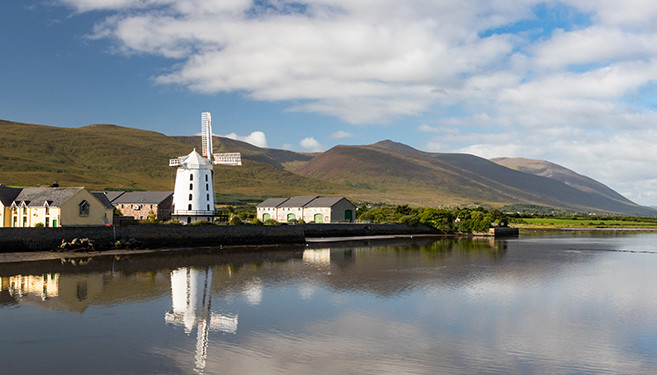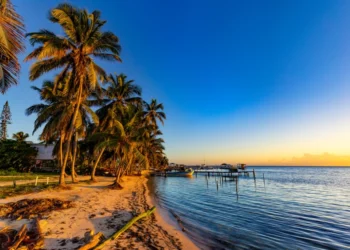Most visitors to Ireland’s County Kerry head for Dingle, Killarney, or the famous “Ring of Kerry.”
Meanwhile, apart from the week of the international Rose of Tralee festival late August, the county town of Tralee and the surrounding Tralee Bay area are largely bypassed.
However, Tralee offers much more than one week a year of street entertainment. In many ways, this is the ideal place to base yourself to enjoy the best of Irish country life in retirement surrounded by postcard-perfect green fields, stone walls, grazing cows, and country cottages.
Here, you’re enjoying some of Ireland’s most dramatic landscapes and seascapes, while remaining close to the conveniences of town and supported by better-than-typical infrastructure and services.
Tralee is a welcoming town that preserves its past culture and history like no other. The capital of Kerry, modern Tralee is the administrative center for the county. Tralee town and its suburbs have a population of about 24,000. Its name comes from the Gaelic “Trá Lí,” meaning “beach of the Lee”… that is, the River Lee, which runs through.
The Norman town was founded in the 13th century as the home of the Earls of Desmond. The town was destroyed in 1580 as revenge for the Desmond Rebellions against Elizabeth I, then later was granted to Sir Edward Denny. The Dennys held their estate here up to and beyond the Great Famine.
Ireland’s west coast counties, including Kerry, were worst hit by the Famine. Between the years 1845 and 1852, more than a million starving Irishmen, women, and children started out on the journey to America, on tall ships that became known as “coffin ships,” with the hope of a better life on the other side of the Atlantic.
Some 100,000 never saw the other side. Those who traveled on the Jeanie Johnston from Tralee (since called “the luckiest ship in the world”), however, all got a second chance. The Jeanie Johnston didn’t lose a single passenger.
Today Tralee is a thriving community with a feel of self-sufficiency that is making the best of its history, culture, and landscape to feed its economy.
Other cities and towns across the country, Dublin in particular, continue to move in a European direction. You see the same brands, franchises, and shop fronts as in any European city. Not in Tralee. The town’s architecture is well preserved. This is particularly visible on Denny Street, which runs up past Tralee Town Park to the Kerry County Museum and is lined with Victorian and Georgian buildings.
The ideal situation for the retiree in this historic corner of Ireland would be a home within good reach of Tralee town and with views over the patchwork fields all around and of the crashing waves of the nearby sea.
In Tralee, you’re enjoying a notably charming and authentic Irish country town and idyllic Irish countryside, and, as well, you’re on the doorstep of Banna Beach, an unspoiled Blue Flag beach, 7 kilometers long, and a favorite with local runners, dog-walkers, and surfers.
If you’re enamored of the idea of retirement to this green isle but are (understandably) put off by the thought of its weather (which, based on my seven years’ experience living in this country, might most kindly be described as “misty”), consider basing yourself here part-year. June through September are the best-weather months and also the liveliest season, when you’d be sharing your adopted home town with visitors from all over the world, especially toward the end of August during the annual Rose of Tralee festival.
And, if Ireland is tugging at your imagination, your timing is good. Property markets across the island continue to soften. We believe they’re headed for a fall… making this the best time in years to begin an Irish property search.
Lief and I have reconnected with our property contacts on the ground.
Kathleen Peddicord
P.S. The tales of my seven years of adventure living on the Emerald Isle are featured in my newest book, “At Home In Ireland.”
My marketing team is making it possible for you to obtain a copy free… for a very limited time.

















